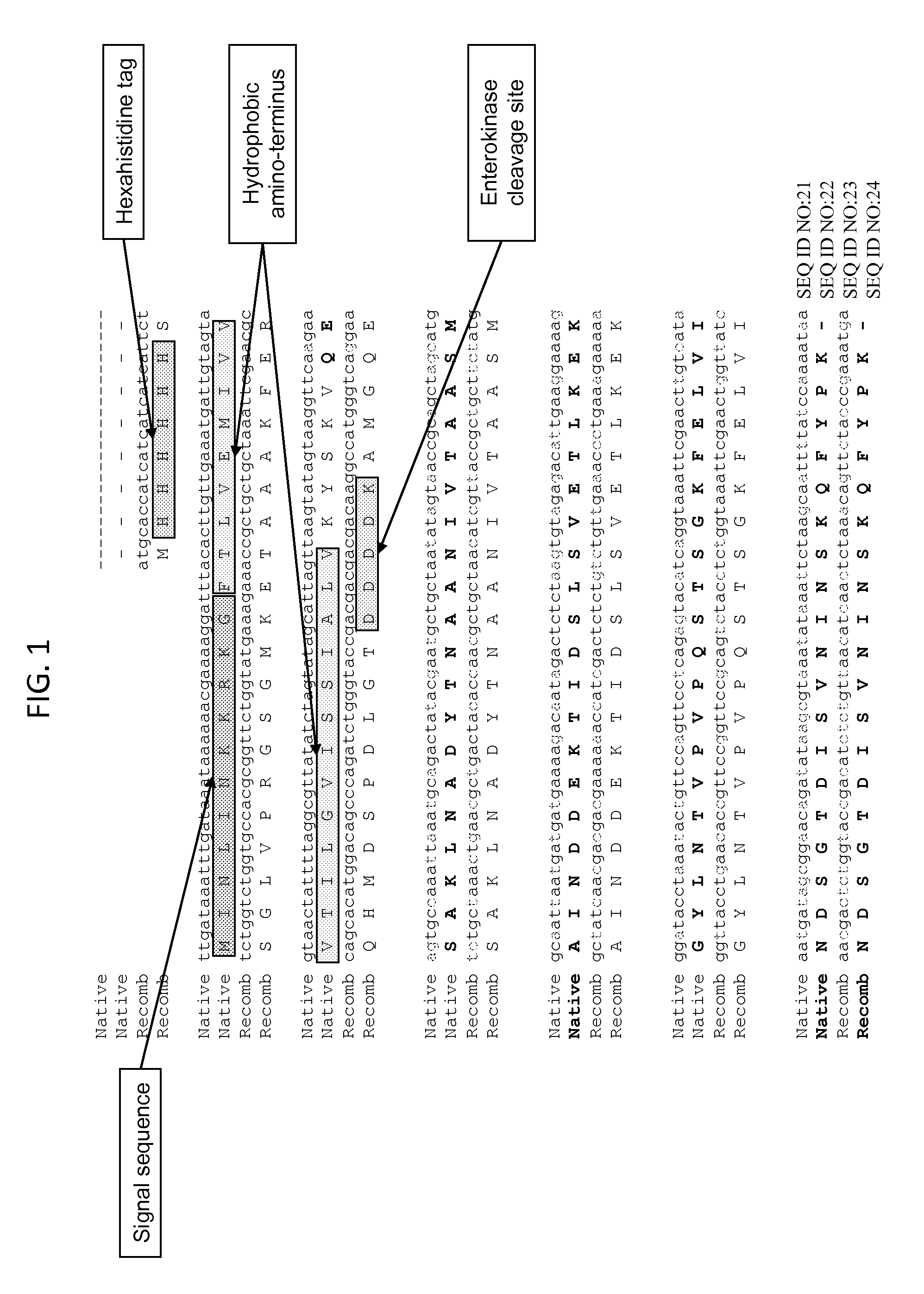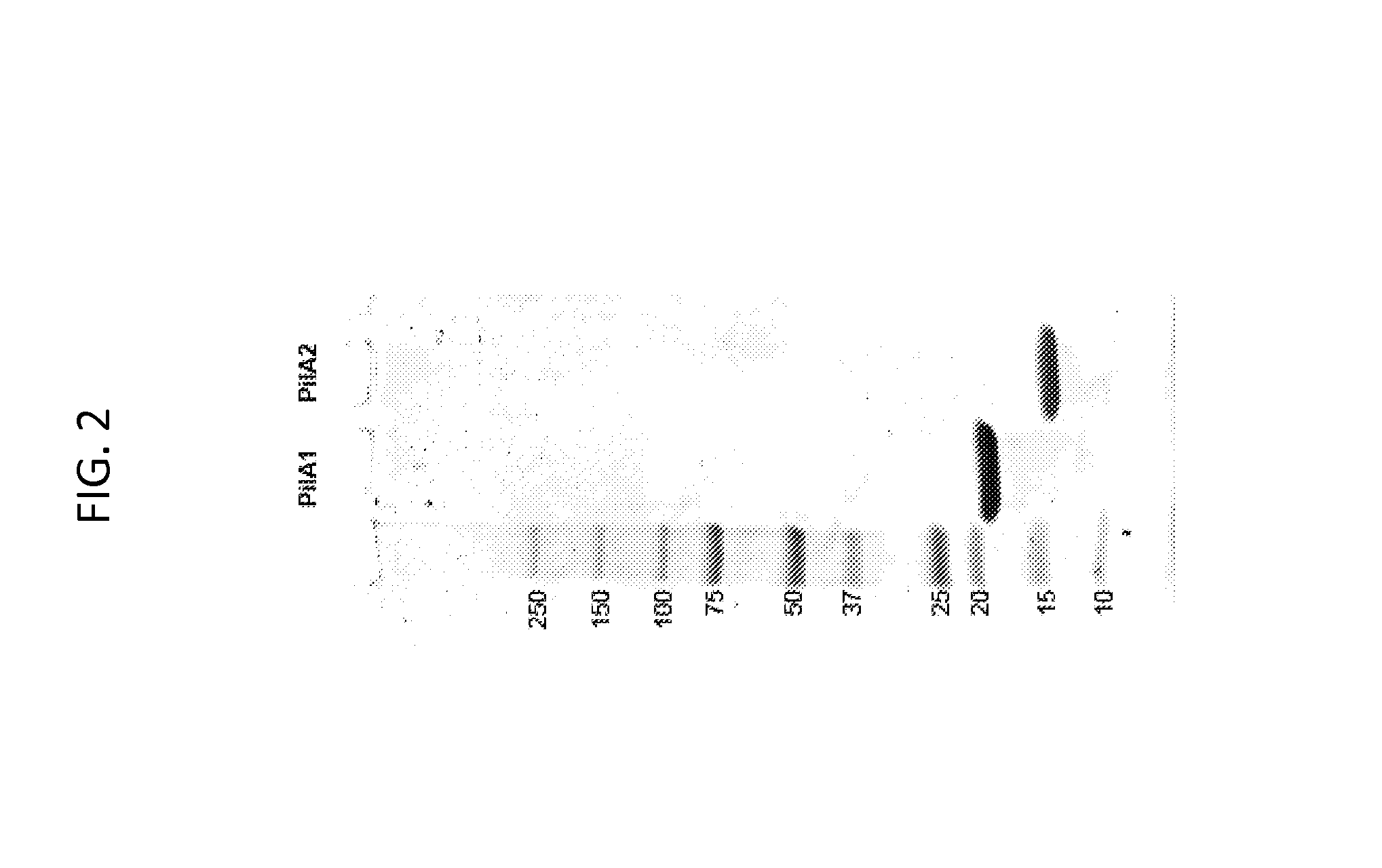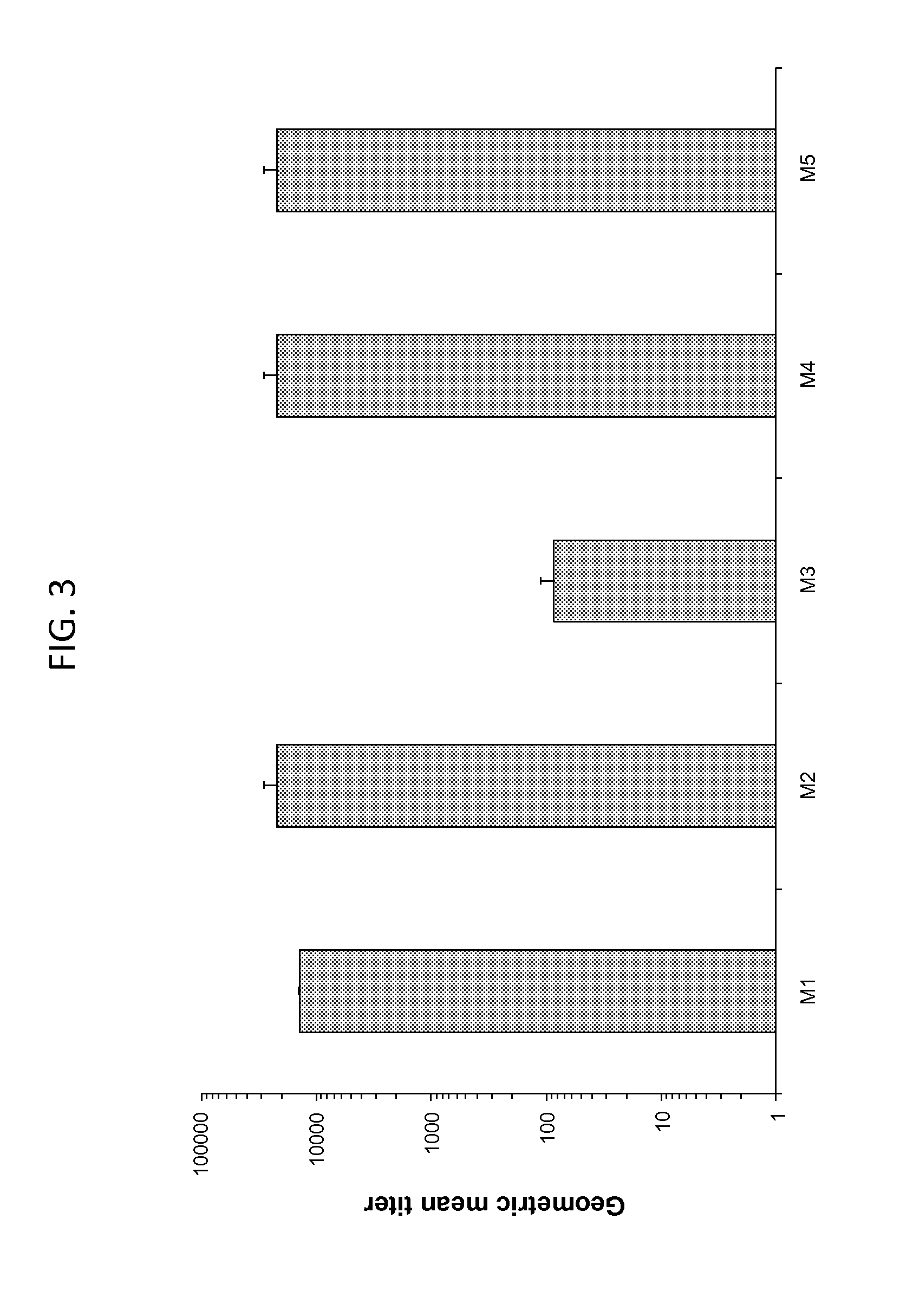Engineered Type IV Pilin of Clostridium difficile
a technology of clostridium difficile and pilin, which is applied in the field of immunology, molecular biology, infectious diseases and medicine, can solve the problems of no licensed vaccine currently available, extreme distress and difficulty in managemen
- Summary
- Abstract
- Description
- Claims
- Application Information
AI Technical Summary
Benefits of technology
Problems solved by technology
Method used
Image
Examples
example 1
[0201]Expression and purification of the type IV pilins from C. difficile. We used the following novel strategy to express and purify high levels of recombinant C. difficile type IV pilins. This method involves identification of insoluble and soluble domains of the proteins, engineering of codon optimized synthetic pilin genes which do not exist in nature but which result in expression of pilin domains identical to those found in nature, optimal expression of pilin proteins, and purification to homogeneity. This method has been successful using two different pilin gene sequences.
[0202]We used our understanding of type IV pilin protein structure to identify the pre-pilin peptidase cleavage sites and hydrophobic mature amino-termini of each pilin gene. For the pilA2 gene found in C. difficile strain 630 and 10 other sequenced strains, we omitted from the recombinant construct the codons for the signal sequence and the first 27 residues of the mature protein (FIG. 1). In type IV pilus ...
example 2
[0205]Generation of polyclonal antisera against recombinant C. difficile PilA1. We immunized 5 mice each with purified PilA1 and PilA2 pilin proteins using a standard regimen consisting of primary subcutaneous injection with Freund's complete adjuvant followed by two booster immunizations with incomplete adjuvant. Using the purified pilin proteins as antigens, we were able to demonstrate in 4 of 5 mice a significant immune response against PilA1 (FIG. 3). However, PilA2 was not immunogenic using this protocol.
example 3
[0206]The efficacy of passive immunization with antibodies to PilA1 in prevention of C. difficile colonization and disease in a murine model. We will determine the efficacy of passive immunization using a recently reported murine model of experimental C. difficile colitis. Chen et al. Gastroenterol. 135(6):1984-92 (2008). Female nine-week-old C57BL6 mice will be treated for 3 days with an antibiotic cocktail of kanamycin (0.4 mg / ml), gentamicin (0.035 mg / ml), colistin (850 U / ml), metronidazole (0.215 mg / ml), and vancomycin (0.045 mg / ml), administered in the drinking water. After this treatment, mice will be switched over to regular drinking water for another 3 days. Finally, on day 7, a single dose of clindamycin (10 mg / kg) will be administered by the intraperitoneal route 24 hrs prior to orogastric challenge with C. difficile strain 630. One group of 14 mice will receive twice the LD50 (1×104 CFU) of C. difficile strain 630 pre-mixed with normal mouse sera and the other will receiv...
PUM
| Property | Measurement | Unit |
|---|---|---|
| particle size | aaaaa | aaaaa |
| molecular mass | aaaaa | aaaaa |
| mass | aaaaa | aaaaa |
Abstract
Description
Claims
Application Information
 Login to View More
Login to View More - R&D
- Intellectual Property
- Life Sciences
- Materials
- Tech Scout
- Unparalleled Data Quality
- Higher Quality Content
- 60% Fewer Hallucinations
Browse by: Latest US Patents, China's latest patents, Technical Efficacy Thesaurus, Application Domain, Technology Topic, Popular Technical Reports.
© 2025 PatSnap. All rights reserved.Legal|Privacy policy|Modern Slavery Act Transparency Statement|Sitemap|About US| Contact US: help@patsnap.com



